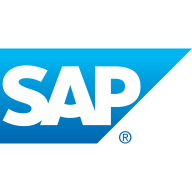


Find out what your peers are saying about Salesforce, Adobe, Shopify and others in eCommerce Platforms.
| Product | Market Share (%) |
|---|---|
| Adobe Commerce | 11.9% |
| SAP Commerce Cloud | 11.1% |
| Sana Commerce | 1.6% |
| Other | 75.4% |


| Company Size | Count |
|---|---|
| Small Business | 22 |
| Midsize Enterprise | 3 |
| Large Enterprise | 5 |
| Company Size | Count |
|---|---|
| Small Business | 7 |
| Midsize Enterprise | 2 |
| Large Enterprise | 10 |
Adobe Commerce offers IT teams a versatile solution to effortlessly launch personalized commerce experiences while ensuring security and speed, all without starting from scratch. It provides a solid foundation of commerce functionality that allows businesses to swiftly enter the market with confidence. With pre-configured composable services, businesses can easily deploy and integrate these services to enhance their commerce foundation. The platform also supports the creation and integration of secure and scalable applications that extend native capabilities and seamlessly integrate with third-party solutions in a serverless PCI-compliant environment. Thanks to App Builder tools, customization becomes more accessible, reducing the overall cost of ownership.
For commerce teams, Adobe Commerce provides a dynamic platform that adapts as customer needs evolve. It enables omnichannel personalization through commerce data, delivering personalized content, promotions, recommendations, and site search through advanced AI and machine learning. This translates to an increased reach to new markets, brands, or business models. The platform empowers users with business-specific, user-friendly tools infused with AI capabilities, thereby enhancing marketing and merchandising efforts. Moreover, businesses can expand their commerce capabilities further by choosing from a vast array of free and premium apps and extensions available in the Commerce Marketplace, covering everything from back-office integrations to customer experience solutions, making it a comprehensive and flexible commerce solution.
Sana Commerce is a SaaS-based B2B e-commerce solution that integrates seamlessly into your tech stack using agile cloud software to enable a stellar e-commerce web store with guaranteed uptime and minimal maintenance.
How? By making your SAP or Microsoft Dynamics ERP and e-commerce work as one. SCC harnesses the power of your ERP to create an e-commerce platform that automates tedious business processes and delights consumers with easy-to-use functionality. It eliminates the system silos, unnecessary complexities and compromises caused by mainstream e-commerce solutions. SCC drives growth and future proofs your business model by facilitating a smooth omnichannel order process without hurdles.
Sana Commerce is a certified SAP and Microsoft Gold partner, backed by a strong global partner network and recognized by leading industry experts.
Want to know if we can meet your B2B needs? Contact us for a personalized demo.
SAP Commerce Cloud, SAP's e-commerce platform, is designed to empower businesses to establish reliable and scalable online stores. Emphasizing innovation at scale, it utilizes enterprise-wide data to enhance profitability and customer satisfaction. The platform focuses on delivering connected, insightful, and adaptable shopping experiences through feature-rich and scalable solutions. Businesses leveraging SAP Commerce Cloud can anticipate driving profitable outcomes, ensuring a seamless shopping journey, and harnessing data for informed decision-making. For a deeper understanding, the website delves into specific functionalities such as product content management, experience management, order management, and integration with other SAP solutions and third-party applications.